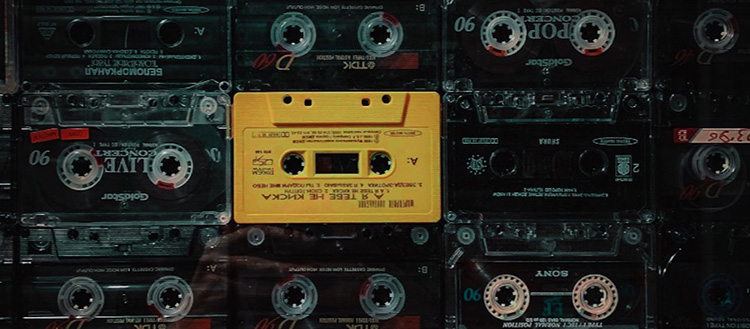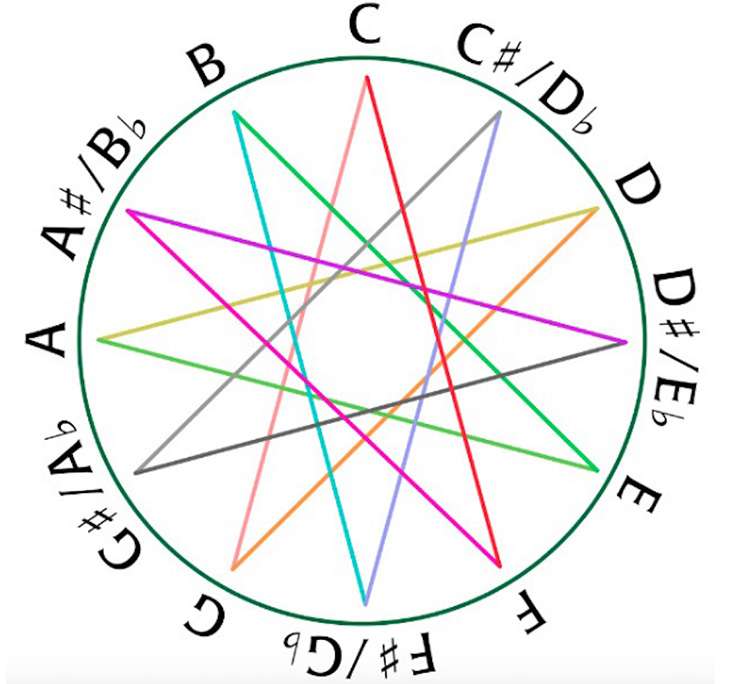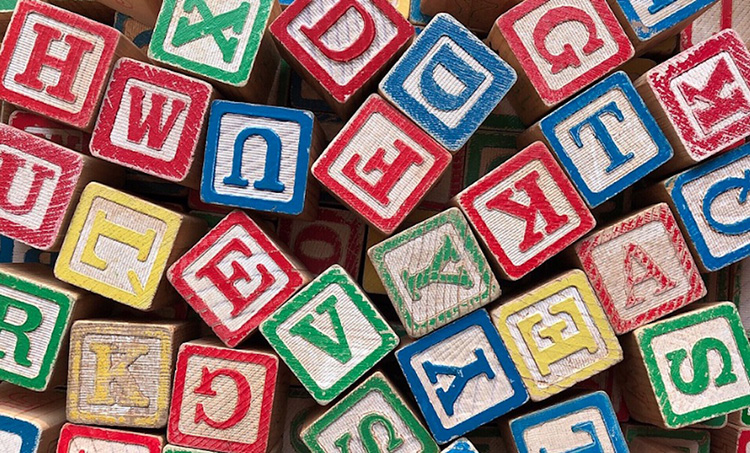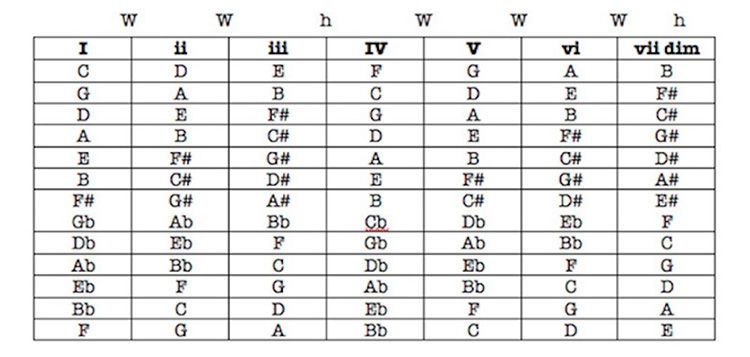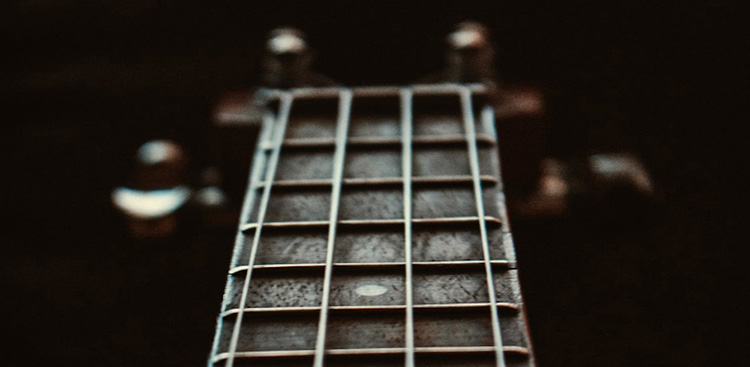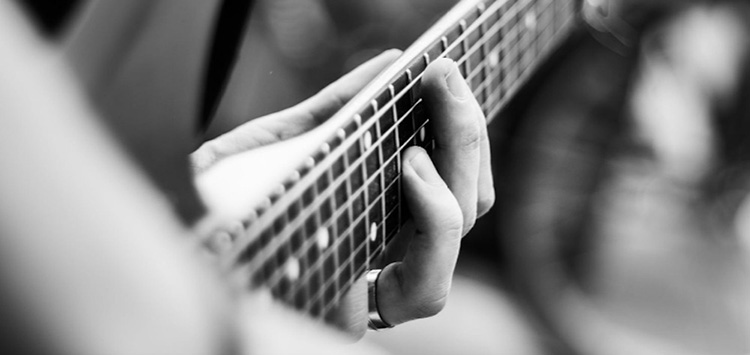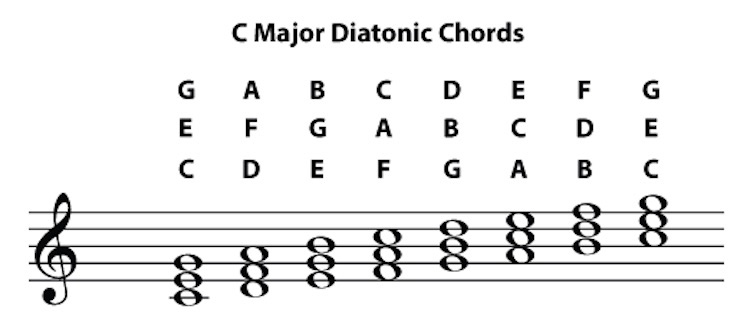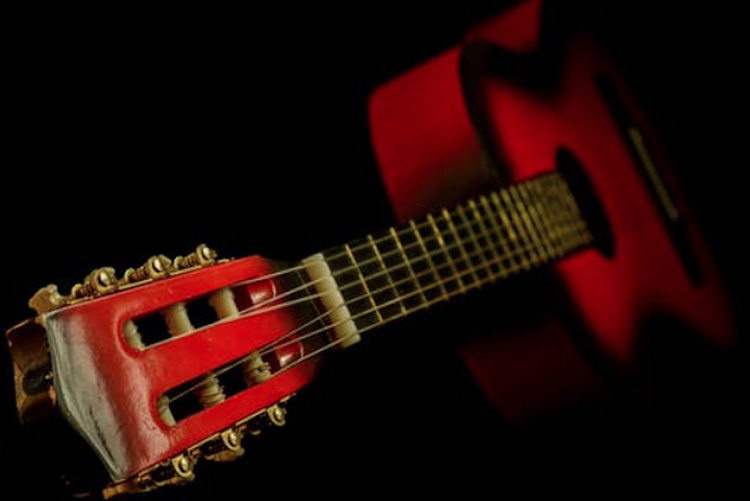Music theory can be intimidating if you don’t know where to start. We’ve got it all laid out for you – Let’s get started!
Over 250,000 guitar-learners get our world-class guitar tips & tutorials sent straight to their inbox: Click here to join them
In this free lesson you will learn…
- The major scale
- The difference between sharps & flats
- Tips for better chord progressions
- How major chords are constructed
- The difference between a major scale & a minor scale
Welcome to Your Music Theory Crash Course!
As guitarists, we can get by for a really long time playing music using whatever answer keys are available out there on the world wide web.
If there’s a song we want to learn, we often just need to Google it.
- The other side of this convenience is that we can easily limit our playing by not understanding how things fit together.
- By not learning to recognize patterns in music by ear, we limit our knowledge.
- So if you’re here for the music theory crash course, congratulations!
You’re about to take your understanding of the guitar and music to the next level.
In your music theory crash course, you’ll learn the components of melody and harmony – how a song goes and what goes with it – and why certain chords show up together in songs all the time.
We’re not going to get into rhythm basics in this music theory crash course, so if that’s the itch in your brain right now, scratch it here: Rhythm Guitar Lessons for All Guitarists
We’re also not going to get into the specifics of how to read music here, but you can check out this lesson to learn more: Reading Guitar Music: The Ultimate Guide
Music Theory Crash Course: Pitch
Pitch deals with how high or low the notes (also called tones, to separate it from when we talk about notes in rhythm) are, which relates to where you play on the fretboard.
Half & Whole Steps
The basic increment of pitch is a half step.
It’s easy to tell where the half steps are on the guitar, because if you go up a single string, a half step is one fret. If you play up the neck one fret at a time, you can hear the pitch increase a half step at a time.
Another important increment of pitch is a whole step, aptly named because it’s two half steps.
The combination of half steps and whole steps make up the bulk of how we tend to travel in music playing a melody – it’s what makes a song lovely and singable, as opposed to bigger jumps in pitch that stop making any sense if they happen all the time.
Pitch is organized using the chromatic scale.
Start at any letter and go clockwise, and you are going up the chromatic scale, which is just the name given to the universe of tones.
Download our lead guitar cheat-sheet to make things easier
It's hard to understand which scales work with which keys.
So we created a cheat-sheet! A key and scale-finder that you can use again and again.

Get your personalised guitar-learning plan 🎸
Get a custom guitar-learning plan here: Click here for GuitarMetrics™
World-Class Guitar Courses 🌎
Learn from the world's best guitar educators: Click here for our guitar courses
The Chromatic Scale: Musical Alphabet, Sharps and Flats
The musical alphabet – A B C D E F G – is how tones are named.
If you go around the chromatic scale wheel above, you’ll see that between most letters, there is a spot that seems to have two names.
Here’s how all that works:
Those notes have two names, and the name used depends a bit on the situation.
Sharp (#) means “up one half step in pitch” and flat (b) means “down one half step in pitch”.
- So the F# means F plus a half step.
- Go up one fret from F and you have F#, but you also have Gb.
- Gb means G minus a half step. Go down one fret from G and you have Gb.
There are letters that have no sharp/flat space in between. Those are B/C and E/F.
These are called “natural half steps”. Natural in this context means “not flat or sharp.”
Here’s a slightly different and very useful perspective on this concept:
Usually, to go up in pitch one letter of the musical alphabet, you go up a whole step.
F plus a half step is F#, plus another half step is G.
Between B and C, and between E and F, to go up in pitch one letter, you only go up a half step.
This is an important concept to grasp.
The Major Scale
This is the do-re-mi part of the music theory crash course. Why are we talking about The Sound of Music? Because the do-re-mi scale is the major scale!
- The good news about this is that everything in music is based around the major scale!
- The major scale is a sequence of tones that gets you from any given tone all the way through the musical alphabet until you get back to that tone.
Here is the sequence: Starting at wherever you choose to put “Do” (C for example) you advance a whole step, then another whole step, then a half step, then three consecutive whole steps, and then another half step.
If you’ve done your math correctly, you should end up back at C! The distance, or interval, between the first C and the next C is called an octave.
The easy-to-memorize breakdown is W – W – H – W – W – W – H.
Here is a nifty chart for you to tattoo on your wrist until you have all the notes memorized!
(Just kidding – Don’t tattoo this on your wrist)
As a guitar player, you might break this big old chart into more manageable pieces.
Start at the top of the chart and work your way down.
Pro Tip: Sharps and flats do not mix in most scales!
They can mix in songs, where you can create any combination you like, but the major scale is a structure, and understanding how music works depends on there being a few structural rules we can depend on.
- As guitarists, we can’t SEE the tones on the neck of the guitar the way pianists can. With this, the note names themselves can take a back seat for music theory crash course purposes.
- Instead, we should look at where these notes lie within the major scale.
- These positions are called scale degrees.
Due to the fact that major scales are all made of the same sequence, they all work the same way no matter which scale you are using.
Pro Tip: The scale you are using is akin to which key you are in, most often.
Pro-tip: Why is it that the 12th fret on the guitar is the octave?
- Why isn’t it the eighth fret?
- It’s because of the whole step – half step sequence that we get to the 12th fret!
Don’t forget as well that there are 12 notes in an octave!
Scale Degree and Intervals
Numbers are assigned to the tones in a scale, so that if you start on C, then C is I, D is II, E is III, F is IV.
That number is also used to express the interval, so D is also called the second, E the third, etc.
- This concept is also important when you are playing a melody on the guitar or improvising a solo, which is really just an ad-hoc melody.
- To sound “good”, the tones you play should tend to have a recognizable relationship to the scale the overall song is using.
- If you have a song in the key of C, your safest choices are tones that fall within the C major scale.
The idea of intervals is also useful outside the confines of whatever scale you’re using.
Figuring out how far apart one tone is from the next is a great way to learn a melody and to transpose that melody into a different key.
Here is a complete chart of intervals to help you map it out on the guitar.
Because the guitar is a matrix of tones (unlike the piano where they are all sitting conveniently in a line) it’s also helpful for you to have an unlimited supply of fretboard charts to refer to.
This can help you to map these intervals across the strings on the fretboard and see how these music theory crash course concepts play out in real life.
The chart will also help you to see how the chord shapes you know and love work across the fretboard!
Music Theory Crash Course: Chords
One of the first and best things we learn on the guitar is how to play chords, and it is a beautiful and wondrous fact about the guitar that we don’t have to understand how they work in order to play them.
- The first way we can dive a little deeper into chords in this music theory crash course is to understand what chords are made of.
- This helps us to see that they exist in more places on the guitar than we think.
- Strictly speaking, a chord is a meaningful grouping of three or more tones.
Basic major and minor chords have three tones in them. The same goes for augmented, diminished, and suspended chords, but these are not music theory crash course material and are unnecessary for figuring out how chords work in the first place.
Looking back at the chart of the notes in the major scales, you can find any major chord by using the first, third, and fifth notes of the scale starting on the tone you want.
- A minor scale differs from the major scale by only one tone.
- You can see that the D major scale has the first tone (the root, the tone the chord is named after) of D, the third tone (also called the third) of F#, and the fifth tone (also called the fifth) of A.
- The D minor chord changes only the third, so that a D minor chord is made of D, F, and A.
Those notes can be found all over the guitar in easy-to-make shapes!
If you print out a fretboard chart, you can circle all of the Ds, Fs, and As between the open strings and the 12th fret and find every iteration of the D minor chord that is available to make!
Learn 12 EASY beginner chords with our popular guide

✅ Stop struggling. Start making music.
✅ Learn beginner-friendly versions of every chord.
This is our most popular guide and it will improve your chord ability quickly! 😎
Get your own personalised guitar-learning plan 🎸
Get a custom guitar-learning plan here: Click here for GuitarMetrics™
World-Class Guitar Courses 🌎
Learn from the world's best guitar educators: Click here for our guitar courses
Music Theory Crash Course: Putting Chords Together
From the major scale chart, you can see how tones 1, 3, and 5 sort of leapfrog themselves into a chord.
- They move in thirds – E is the third of C, and G is the third of E, and B is the third of G.
- This system is what is used to build a family of chords in any given key.
- Use only the tones in that major scale, begin on each scale degree, and using every other tone, you can build the rest of the chords in that key!
That group of chords is part of a system of diatonic harmony, which means that the tones in a given scale go well together to make harmony.
(You can ignore the notation; that’s just what the chords look like on the staff.)
We can express this order of chords as roman numerals from left to right:
I ii iii IV V vi viiº
That’s the sequence you need, and it works in any key.
Notice that the I, IV, and V chords are capitalized.
Those are the naturally-occurring major chords in any key, and the lower case chords ii, iii, and vi are the naturally occurring minor chords in any key.
- The viiº is a diminished chord, and you can ignore it for music theory crash course purposes because it is not used as a structural chord most often.
- The I, IV, and V chords are the main players in any given song, and they each have jobs.
- The I chord’s job is to be the home base of the song, where the song “lands” to sound like it is resolved, stable, or ending.
- The IV chord’s job is to lead your ear away from the I chord without completely breaking up the flow of the song.
- The V chord’s job is to lead your ear back to the I chord. It’s the second most important chord in a song for this reason.
Those jobs aren’t absolutes; they are just tendencies.
- What you can do is take your favorite song and a workable chord chart for that song, and try to figure out what key the song is in using these numbering skills and your ear.
- The more you do this, the more you will be able to hear patterns in the songs you are playing.
- Maybe they use the same chords!
You may already be familiar with this excellent demonstration of that principle by the comedy trio Axis of Awesome
Pro-Tip: Chords are defined and identified by the tones within them. If you have C, E, and G and no other tones, you have a C major chord, no matter where on the guitar or other instruments you put those tones.
They can be and often are doubled on the guitar and put in all sorts of different orders; it does not change the name of the chord!
The only thing that changes the name of a chord is adding another note.
Moving Beyond the Music Theory Crash Course
Music theory crash course ideas are much easier to understand if you can apply them to your musical life.
Give these suggestions a go:
- Try finding intervals on your guitar.
- Try to play some major scales using the fretboard chart.
- Try to memorize and use the major scale sequence to construct the scales.
- Take the songs you know and love and try to figure out the numbers of the chords!
- Two resources that are excellent and not too dry for learning music theory in a bit greater detail are this book:
Music Theory for Practical People by Ed Roseman
…and for endless instruction, exercises, and quizzes, visit teoria.com!
Recommended Resources
If you loved this free music theory crash course, you’re going to thoroughly enjoy some of our other content:
https://nationalguitaracademy.com/barre-chords/
https://nationalguitaracademy.com/capo-chart/
https://nationalguitaracademy.com/guitar-chord-chart/
https://nationalguitaracademy.com/caged-guitar-system/
What Type of Guitarist Are You?
Take our 60-second quiz & get your results: Take The Quiz
Join the world's best online guitar school 🌎
- Get your own personalised guitar learning plan (customised just for YOU).
- World-class online guitar courses. Learn at your own pace.
- Community Campus & Learning Forum - A friendly community! Connect with our team & students. 😊
- Beginner Song library with chordsheets, tabs and tips. (Songs suitable for all levels!)
- Regular live streams, seminars and Q&A sessions - Learn from world-class guitar educators. Get all your questions answered!
Click here to learn more about National Guitar Academy membership 
Cool Guitar T-shirts 😎
Look cooler! Check out our merch: Click here to see our merch store
Want free guitar tips and video lessons delivered to your inbox?
Join over 250,000 other guitar learners and subscribe to our guitar-tips-by-email service. (It's free.)
We'll send you a series of lessons that will move you to the next level of your guitar journey.
Learn how everything fits together quickly, easily and effectively. We share ninja tips (for instant fun!) but also timeless fundamentals that will deepen your understanding.

Popular Lessons
How To Learn Guitar: An 11-Step Programme For Beginners
How To Choose The Perfect Beginner Guitar
More Cool Guitar Stuff
Learn about National Guitar Academy: About Us
Visit our YouTube channel for fun guitar videos.
Join us on Facebook for daily guitar tips.
Listen to our Learn Guitar Podcast for rapid guitar progress.
Check out our free chord lessons.
Get our best guitar tips & videos
Where should we send it?
Where should we send it?
Get our best guitar tips & videos


